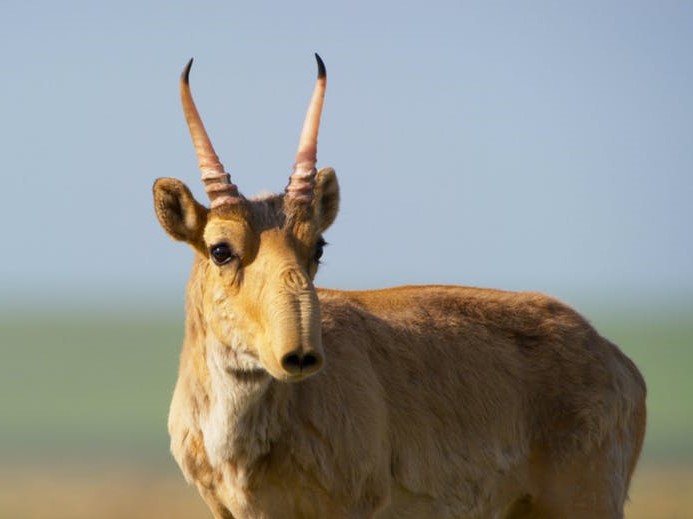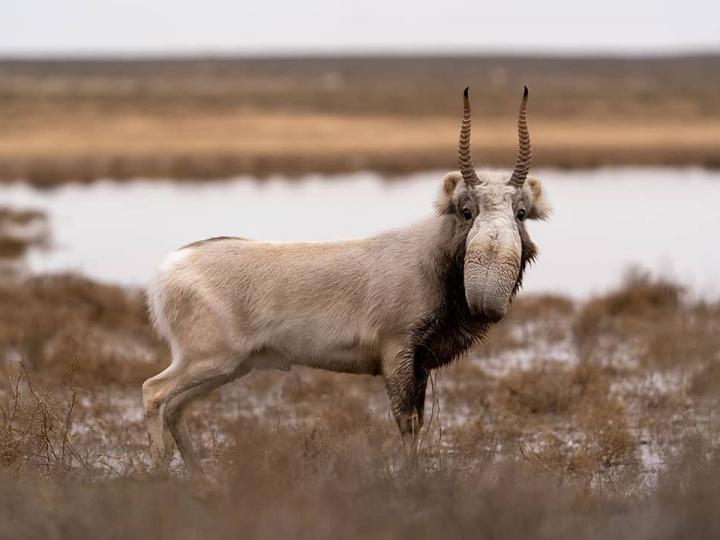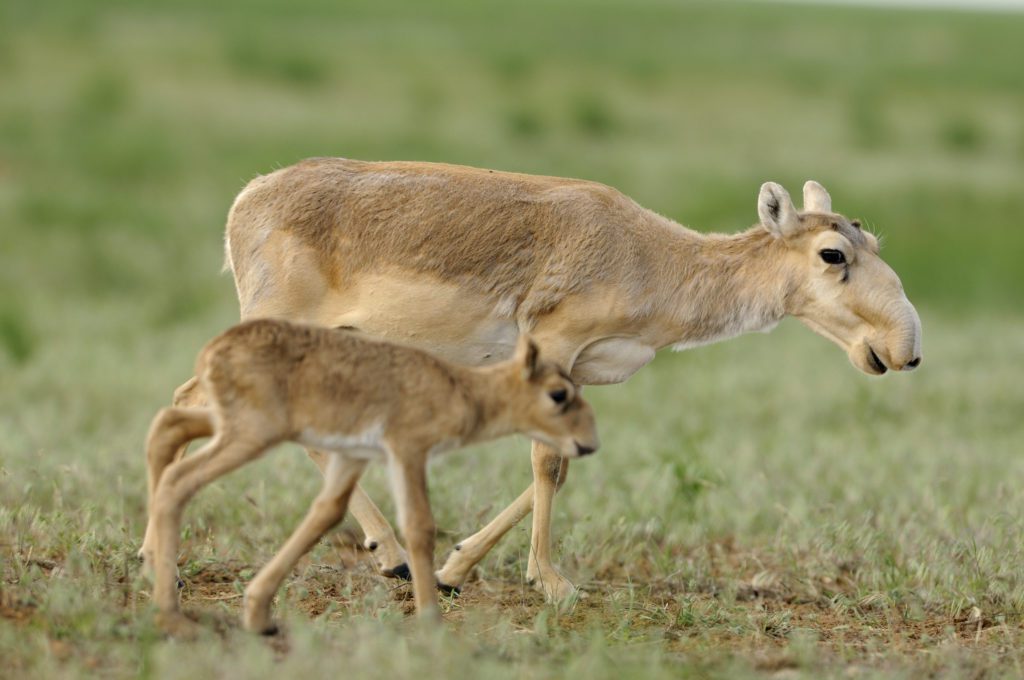Saiga Antelope
Saiga look a bit like Jim Henson puppets or perhaps a creature from “Star Wars” but there’s much more to tell about these fascinating little antelope.
Adapted to the Steppe
The Eurasian Steppe is no easy place to call home, and the saiga has very nearly perfected it’s adaptations to this harsh environment. One of the most fabulous ways they’ve adapted is the inclusion of a lovely winter coat which sheds away in the summer.
The saiga have been living in steppe environments even before the Eurasian Steppe, when the last Ice Age still held a firm grasp on the planet. They roamed what is known as the Mammoth Steppe alongside you guessed it, mammoths. They also shared the land with steppe bison, giant short-faced bears, American lions, and the first humans to arrive in North America.
Few animals were able to adapt and survive the melting glaciers but the saiga was certainly one of them.
What's with that nose?
Great question! While their nose is used in mating displays and as a resonating chamber for some impressive calls it has some survival adaptations as well. Their giant, floppy nose is helpful in filtering out dust in the summer as they migrate after the freshest grasses. In winter that nose warms incoming air to ensure their body temperature can remain steady.
If you’ve ever gone for a jog in the cold you’ve probably felt how terrible that cold air feels when it hits your lungs. Wearing a scarf or mask over you face when out in the cold can function like a saiga nose and help warm that incoming air. You’ll find your jogs much more bearable!


Decline of the saiga
Even the toughest animals face hardships. For the saiga this comes in the form of habitat loss, habitat fragmentation, over-hunting, climate change… the list goes on. Like many grassland mammals saiga can often migrate vast distances to find food. As they move in and out of preserves they can face hunting pressures as well as human infrastructure such as roads and farms. Hotter and dryer summers lead to droughts while colder winters kill off saiga in large numbers.
Mass die-off events
Male saiga of reproductive age fight aggressively with other males to protect a harem that can include as many as 50 females. The males are so focused that they often don’t eat at all for weeks. At the end of breeding season males are weak and prone to predation attacks. It is estimated that about 90% of adult males die after breeding season.
Females during breeding season are well protected and well fed. Once it comes time for birthing however, things change. Female saiga group together in huge herds for safety and all give birth within a few days of each other. In this way they ensure there are lots of eyes to look for danger and that any predators are overwhelmed simply by the huge number of offspring. This is a common strategy for many prey animals and even animals like the periodical cicadas that emerge in mass like Brood X.
In 2015 tragedy struck when a disease spread through the gathered herd like wildfire. Over 200,000 saiga died in less than a month. This mass die-off wiped out 70% of the total world population at the time. One reason this could have happened is because of the concept of a genetic bottleneck. Saiga populations had reached low numbers in the past leading to very little genetic diversity. Further die-offs like that in 2015 could easily lead to problems in the future of poor disease or cold resistance. If those that survived are susceptible to a different kind of disease, another gathering could wipe out a population entirely.

Conservation successes
In 2002 less than 1,000 saiga remained in the wild. Today, about 120,000 now roam the Eurasian Steppe. While they still have a long road ahead of them, many great conservation programs exist to help these interesting little antelope. From GPS collars to regular population monitoring both on foot and in the air scientists are working hard to keep an eye on the saiga. The World Wildlife Fund has funded the creation of artificial watering holes for saiga.
The Saiga Conservation Alliance and the CMS Saiga MOU are great resources for more information on saiga and the conservation going on to save them.
Great footage of saiga life including winter rut, spring birth, and a detailed account on the challenges they face.
Sources/Further Reading:
- Saiga Antelope. Wildlife Conservation Society. Retrieved May 13, 2021.
- Planet Earth II: why more than 200,000 saiga antelopes died in just days. Milner-Gulland, E., Morgan, E., and Kock, R. 2016. The Conversation.
- Saiga. Fitz, B., and Fitz, R. 1999. Documentary. CONTENT WARNING: footage of live animals butchered and horns taken.
- Big Island, Small Planet: Challenges and Failures in Conserving Hawaiian Sandalwood Trees. Leopold, S. 2015. PDF.
- Species At-Risk Assessment Tool. United Plants Savers.
- Steppe change – Kazakhstan saiga population has more than doubled in last two years. Knight, T. 2019. Fauna & Flora International.
- Floppy-nosed antelope has baby boom, raising hope for critically endangered species. Bittel, J. 2020. National Geographic.
- Saiga Antelope. Yukon Beringia Interpretive Center.
Did you spot an error or have questions about this post? Email Nicole Brown.
